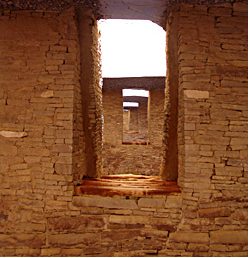Document Type
Article
Publication Date
Spring 4-2022
Abstract
Animal body size estimation from zooarchaeological specimens often relies on specific, one-dimensional (i.e., conventional) measures from skeletal elements. Here, we introduce an animal body size estimation technique for archaeological fishes that relies on 3D reference scans and the calculation of centroid size, a standard 3D geometric morphometric proxy measure for organism size. Centroid size-based estimations on whole caudal vertebrae are strongly correlated with a widely accepted measure (i.e., centrum width), but the scalability and flexibility of the centroid size-based approach allows for use on a wide variety of fragmented remains. We use zooarchaeological fish remains (subfamily Ictiobinae) from late pre-Hispanic period large village sites located in the Middle Rio Grande region of New Mexico. Informal reports suggest that fishes were large during this time, and we demonstrate that ictiobines were significantly large compared to modern specimens. The centroid size-based body size estimation technique indicates that Ancestral Pueblo fishing strategies were associated with energy maximizing foraging behavior.
Publisher
Elsevier
Publication Title
Journal of Archaeological Science
ISSN
0305-4403
Language (ISO)
English
Keywords
Body length estimations; Osteometry; Desert Fishes; Ancestral Pueblo; 3D Geometric Morphometrics; Ictiobus bubalus; Carpiodes carpio; Zooarchaeology
Recommended Citation
Dombrosky, Jonathan; Thomas F. Turner; Alexandra Harris; and Emily Lena Jones. "3D Library from Body Size from Unconventional Specimens: A 3D Geometric Morphometrics Approach to Fishes from Ancestral Pueblo Contexts." Journal of Archaeological Science (2022). https://digitalrepository.unm.edu/anth_fsp/6
Included in
Aquaculture and Fisheries Commons, Archaeological Anthropology Commons, Desert Ecology Commons


Comments
Any reproduction or research using the 3D scans provided here must be approved by the Maxwell Museum of Anthropology. Contact at: maxwell@unm.edu.